When it comes to K-12 education, not all states are created equal. Some shine brighter than a freshly polished apple, while others might leave students feeling like they’ve bitten into a sour lemon. Parents everywhere want the best for their kids, and choosing the right state can make all the difference in their educational journey.
Best States for K-12 Education
K-12 education in the U.S. varies significantly by state. Quality indicators such as funding, teacher qualifications, and student outcomes create disparities. Some states feature robust educational systems that provide excellent resources, while others lack essential support.
Data from the National Center for Education Statistics shows that states like Massachusetts consistently rank high in metrics such as standardized test scores and graduation rates. Other states might struggle to meet these benchmarks, reflecting differences in educational priorities and investment.
Parental choices often hinge on these disparities. Families frequently research individual state policies, school performance ratings, and available programs to determine the best educational environment for their children. Informed decision-making enables parents to select states that foster academic excellence.
Teacher retention plays a crucial role in education quality. Effective teacher training programs and competitive salaries contribute to higher retention rates in states with strong educational frameworks. In contrast, states facing teacher shortage issues may see lower student achievements due to lack of experienced educators.
Environmental factors also impact K-12 education outcomes. Schools in affluent areas usually receive more funding than those in lower-income regions, perpetuating cycles of inequality. Urban and rural districts may differ significantly in resources, affecting educational opportunities for students.
Assessing state policies aimed at improving education reveals varying approaches to addressing challenges. Innovative programs and reforms implemented in some states showcase successful strategies that can be replicated elsewhere. Continuous monitoring and evaluation remain essential to ensure all students receive quality education.
Criteria for Evaluating States

Evaluating states for K-12 education involves examining several key criteria. The following factors are essential for understanding the educational landscape across different regions.
Academic Performance
Academic performance serves as a fundamental indicator of educational quality. Metrics like standardized test scores, graduation rates, and overall student achievement provide insight into how well states educate their youth. Massachusetts, for example, consistently ranks at the top with high scores in math and reading assessments. Additionally, states with higher graduation rates often correlate with robust curricula that foster student engagement and college readiness. Assessments of student performance reveal disparities, highlighting states that excel versus those that struggle.
Funding and Resources
Funding and resources play a crucial role in shaping educational outcomes. States with higher per-pupil spending typically offer more comprehensive programs, advanced technology, and extracurricular activities. Data shows that affluent areas often have better funding, which leads to enhanced educational facilities and resources. Conversely, lower-income regions face resource challenges that can hinder student success. Adequate funding is vital for ensuring equal opportunities and closing performance gaps among students.
Teacher Qualifications
Teacher qualifications significantly influence the quality of education. States that prioritize hiring educators with advanced degrees and extensive training often see better student outcomes. Effective teacher retention strategies, such as competitive salaries and ongoing professional development, further enhance educational quality. States known for high teacher qualifications usually offer support systems that nurture educators, leading to an experienced teaching workforce. Evaluating teacher qualifications reveals critical insights into each state’s commitment to education.
Top States for K-12 Education
Several states excel in providing quality K-12 education, marked by strong academic performance, adequate funding, and highly qualified teachers. The following states represent the pinnacle of K-12 educational systems.
State A: Overview and Strengths
Massachusetts stands out for its strong emphasis on academic performance. Test scores consistently rank above the national average. Graduation rates remain high, reflecting a commitment to student success. Funding per pupil also ranks among the highest in the country, ensuring resources are available for all students. Teacher certifications and expertise play a critical role in the state’s success, with many educators holding advanced degrees. These factors combined create an environment where students thrive academically.
State B: Overview and Strengths
New Jersey ranks second due to a robust educational framework. The state invests heavily in K-12 education, with substantial per-pupil spending that translates to better facilities and programs. Standardized test scores indicate strong student achievement across various demographics. Teacher retention rates are among the best, ensuring experienced educators remain in the classroom. Additionally, diverse educational programs cater to the needs of all students, promoting equity and inclusion. This holistic approach fosters an environment conducive to learning.
State C: Overview and Strengths
Florida rounds out the top three with innovative educational reforms. The state has implemented various programs aimed at improving student outcomes. Significant investments in technology and resources enhance learning experiences. Moreover, competitive salaries help attract and retain qualified teachers, which correlates with improved student performance. Standardized test scores show steady progress over the years, indicating a positive education trajectory. Overall, Florida’s strategies exemplify efforts to address educational disparities effectively.
Challenges Faced by K-12 Education
K-12 education in the U.S. faces several challenges that vary by state. Significant issues include funding disparities and pervasive educational inequalities.
Funding Issues
Funding issues create obstacles for many K-12 education systems. States with limited resources can’t provide sufficient support for students, leading to differences in educational quality. States with higher per-pupil spending, like Massachusetts and New Jersey, demonstrate better outcomes and enhanced resources. Factors such as local property taxes exacerbate the problem, particularly in lower-income areas. Schools in these regions often struggle to meet basic needs, affecting teacher salaries and classroom supplies. When states prioritize equitable funding, they lay the groundwork for improved educational environments.
Inequality in Education
Inequality in education persists across the nation, impacting student achievement. Students from affluent families usually access better resources, while those in low-income areas face significant disadvantages. Academic performance often reflects this disparity, with standardized test scores illustrating the gap. In states with effective policies, initiatives aim to bridge these gaps through targeted programs and support systems. To combat inequality, states need to focus on equitable distribution of resources and targeted educational reforms. By addressing these challenges, they can enhance educational equity for all students.
Conclusion
Choosing the right state for K-12 education can significantly impact a child’s learning experience and future success. States that prioritize funding teacher qualifications and equitable resources create environments where students thrive. Massachusetts New Jersey and Florida serve as prime examples of how effective policies can lead to improved academic outcomes and reduced disparities.
As families navigate their educational options it’s essential to consider both the strengths and challenges within each state’s system. Continuous advocacy for educational reforms and equitable resource distribution remains crucial in ensuring that all students receive the quality education they deserve. Investing in education today paves the way for a brighter future for the next generation.

